One of the most scenic parts of Dalmatia is undoubtedly Krka National Park. Here is your guide to Krka National Park and how to enjoy those falls!
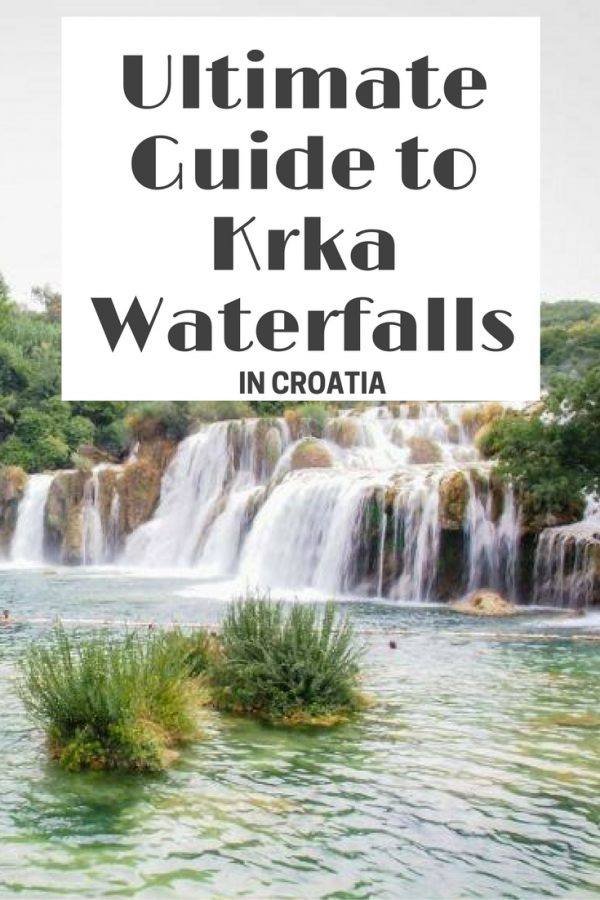
One of the most scenic parts of Dalmatia is undoubtedly the famous Krka National Park. Few places in Europe are as naturally beautiful, and with the mighty Krka River running through it, there are some spectacular waterfalls to check out.
These are, without a doubt, some of the most iconic features of the region overall. They were even featured in Game of Thrones. Especially Skradinski Buk, the most spectacular of all Krka National Park waterfalls, even beats all of Plitvice Lakes’ waterfalls in terms of size and volume.
You might be wondering what is so awe-inspiring about the Krka waterfalls. You’ve seen one; you’ve seen them all, right? Wrong! Simply Googling images of the Krka waterfalls will show you why this wonderfully natural area gets so busy, especially during the summer months.
Skip Ahead To My Advice Here!
Map Of Krka National Park
What To Do At Krka National Park
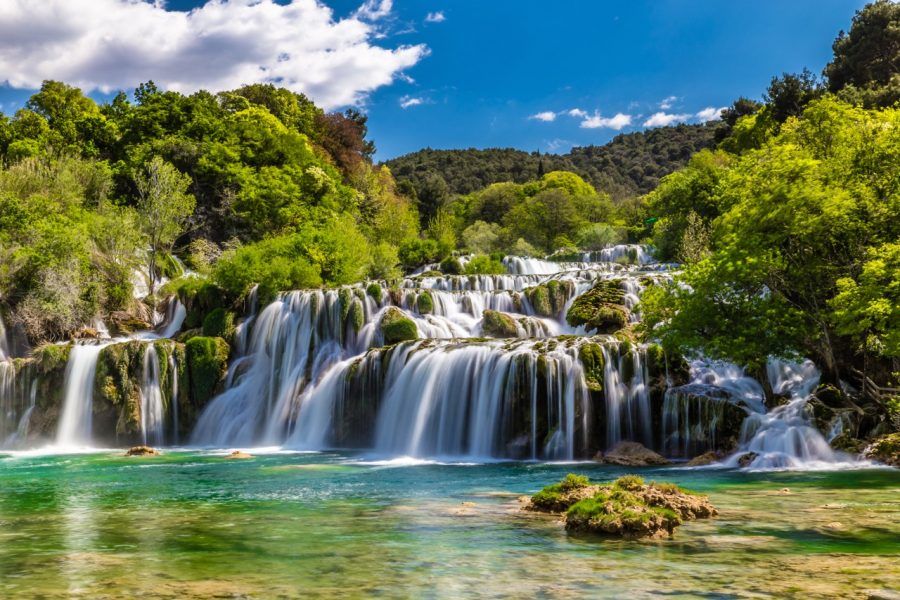
The seven waterfalls that make up the park sit deep into some of the lushest vegetation you will set eyes on anywhere. On top of this, the park is also known for its rich history, with the Krka Monastery and no fewer than five ancient Krka fortresses being must-visit spots.
Admire The Spectacular Krka National Park Waterfalls
Visit all seven Krka falls! Out of the seven waterfalls in Krka National Park, without a doubt, the most famous is Skradinski Buk. This is where the bus will transport you from the Lozovac Krka National Park entrance.
Skradinski Buk
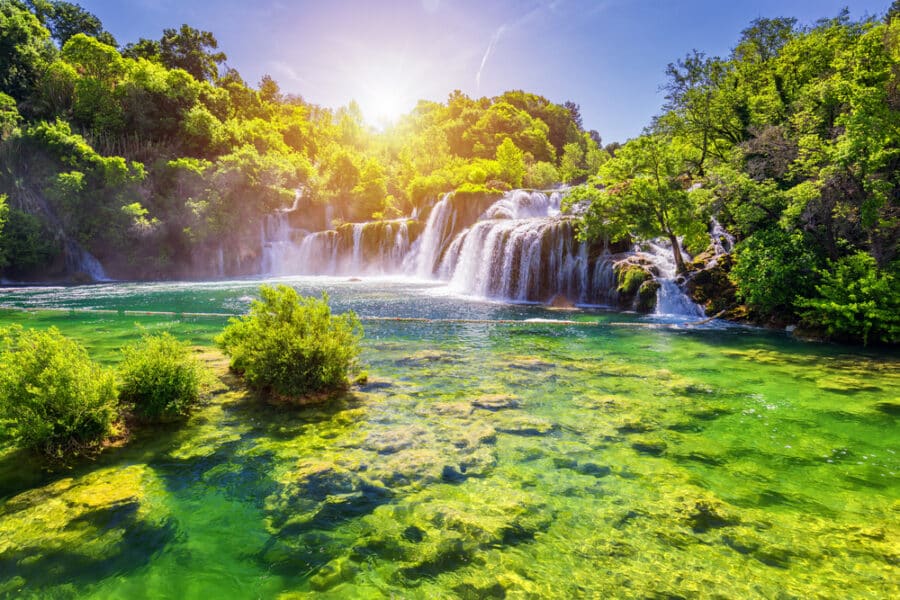
This is the longest waterfall on the entire river, and the power and might of it really will take your breath away. You can view the waterfall from various platforms, with paths and bridges set around the area for you to enjoy a nature walk, all leading to the falls. Additionally, to the delight of many visitors, Skradinski Buk swimming used to be allowed, but since Jan 2021, it has been banned.
So, the answer to the frequently asked question ‘can you swim in Krka National Park?’ is a definite ‘NO!’
Along the way, watermills and columns for washing back in the day are also fascinating to check out. The old architecture of the area has been kept as close as possible, with several water mills now turned into souvenir shops in the same style.
So, you might be wondering how to get to Skradinski Buk. Here’s your answer. A convenient bus service takes visitors from the Lozovac Krka entrance to this impressive waterfall. This natural wonder makes visiting Krka National Park such a popular activity on holidays in Croatia.
Local Tip: As of 2017, a maximum of 10,000 visitors are permitted at any time at Skradinski Buk. So, book ahead and be sure to secure your tickets in advance. See more at https://www.parkovihrvatske.hr/webshop.
Roski Slap
This 22.5-meter-high waterfall is also known as the ‘vast’ waterfall because of its size, and before you reach the thundering waters of the fall itself, there are cascades, travertine islands, and backwaters leading up to it. You venture through beautiful green landscapes to get to the waterfall, with 517 historic wooden steps to navigate between Ozidana Pecina cave and the falls themselves.
There is also a Roman road over the top of the waterfall and a complex of mills to explore. This is about nature and history, with Roski Slap probably being the most impressive of all the waterfalls in the area.
Manojlovac Slap
Along the Knin-Kistanje road, you will find the hidden Manojlovac Slap waterfall. This is the third-largest waterfall in the series, and many visitors to the region count it as the most picturesque, with a height of 59.6 meters.
The canyon around the water is probably the biggest attraction aside from the fall itself because nature walkers will be in their element, with overgrown vegetation to explore and various wildlife calling it home. The waterfall’s noise can undoubtedly be heard before it comes into view, and during times of high water, you will see a rainbow mist floating high into the air – a truly magnificent sight.
Bilusica Buk
The first waterfall in the park is Bilusica Buk, and it is one of the easiest to reach. There are two watermills along this stretch of the river, nodding back to history, while the power of the falls is huge, so again you will hear the thundering noise before you get to see it for yourself. The canyon is likewise great to explore on foot, with hiking trails easily marked out before you reach a trail running down toward the falls themselves.
These are the four main waterfalls out of the seven total waterfalls of Krka National Park. The more minor falls are worth a visit, and these are less crowded areas. However, if you want to check out Mother Nature in her mightiest form, then the big hitters in the park described above should be your primary focus.
Make sure you dress for the occasion with comfortable and sensible walking shoes, and bring your swimming gear, as certain areas allow swimming during the summer months.
Visit The Ethno Villages
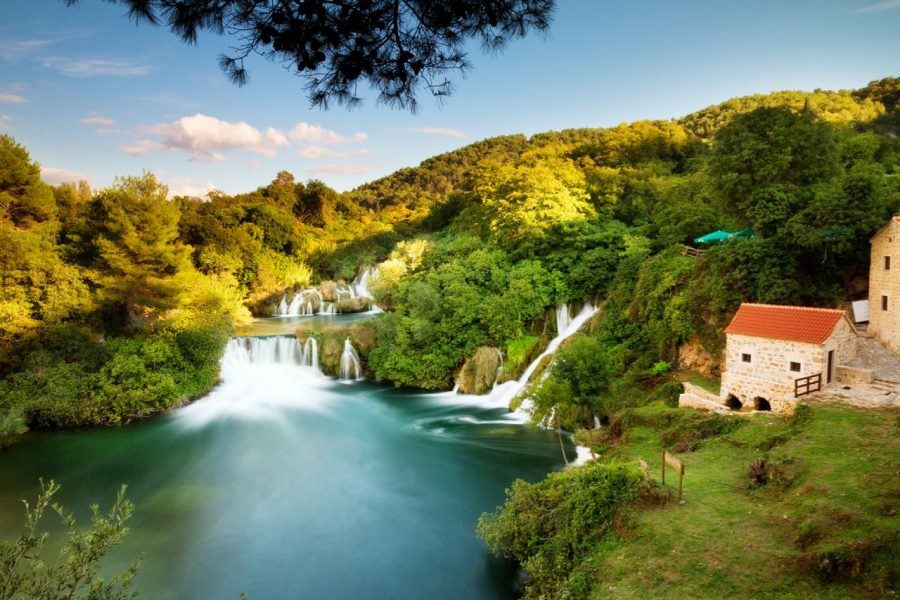
While Skradinski Buk and the other waterfalls at Krka are the undisputed star attractions of this Croatian national park, there are also some other treasures to discover. You can, of course, focus on the roaring river. But you’d be missing out. You’re also advised to take the time to explore and learn about the human history of the area. And the best places to do that are the two ethno villages in Krka National Park.
It’s the people who’ve lived here for centuries that make it such an authentically Croatian place. Their traditions, heritage, and daily comings and goings have helped shape the area into what it is today. So, go beyond the cascades, falls, and misty woodland scenery, and you’ll notice there’s a lot more to this park than natural attractions.
The best examples of the Krka culture are the watermills in the preserved ethno villages. There are two of those: the main one at Skradinski Buk and another one at Roski Slap. Especially the Skradinski Buk watermills have been an economic driving force for the Šibenik region for many centuries.
They were first mentioned in a document as early as 1215. The largest preserved ethnographic building is the Gornja kuća or Upper House at Skradinski Buk. This structure features an upstairs kitchen, the miller’s flat, and watermills. There are also half a dozen other mills on the ground floor. You can tour this historic watermill for superb insight into what life in Krka was like.
Walk The Educational Hiking Trails
The best way to explore this fantastic area is by walking the educational hiking trails in Krka National Park. Hiking offers you the best views of the landscape, the opportunity to see fauna and flora, and explore historic sites – the ultimate all-around Krka experience, if you will. Educational boards line most of the trails. They’ll provide in-depth information on the plants and animals in Krka National Park, as well as its cultural heritage and historic sites.
There are three short loop trails at Krka:
- Skradinski Buk (1,900 meters)
- Roski Slap (1,360 meters)
- Krka Monastery (2,100 meters)
Additionally, there are also numerous out-and-back hikes of various distances in Krka National Park, leading to viewpoints and waterfalls, canyons, and past fortresses.
See The Oziđana Pećina Cave
Evidence of prehistoric human settlements has been found in two caves in Krka National Park. The Oziđana Pećina Cave is the main one. This tunnel-shaped cave is where a variety of human traces were discovered, ranging from flint knives, stone tools, and ceramics to a couple of human skeletons, animal bones, and seafood shells.
The cave’s human presence record spans from about 5,000 to 1,500 B.C., making this a site of significant cultural, historical, and archaeological importance. These findings include all Neolithic cultures of the Adriatic (the Hvar, Danilo, and Impresso cultures) and Eneolithic cultures. You can get to the cave via the Stinice – Roski Slap – Oziđana Pećina educational walking trail.
Visit The Medieval Krka River Fortresses
In addition to the ethno villages, there are also five ancient fortresses in Krka National Park that remind visitors of the region’s rich history. Croatian noblemen and royalty built phenomenal fortress-cities in the area in the Middle Ages, constructions that were both the core of small settlements and occasional defensive retreats.
The five Krka fortresses are Kamičk, Nečven, Trošenj, Bogočin, and Ključica. The latter is one of the greatest historical strongholds in Croatia and one of Krka National Park’s main highlights. A cycling and hiking trail near the village of Ključ offers access to a viewpoint overlooking the magnificent Ključica Fortress and the Krka and Čikola canyons.
Coming Soon – Krka Suspension Bridge
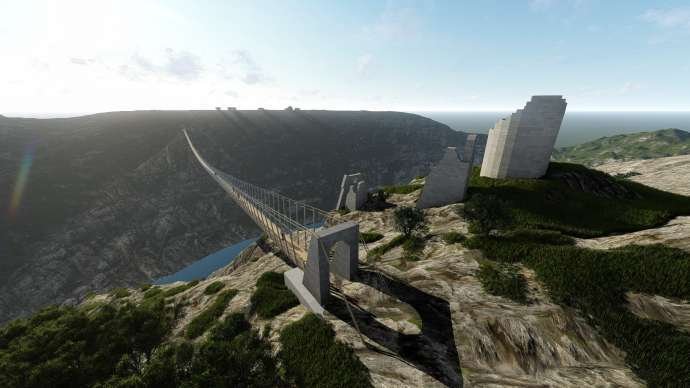
Be on the lookout sometime in the future for the new suspension bridge linking two fortresses – Nečven and Trošenj. This brand-new bridge is planned that would make it much easier to explore some of the area’s greatest historical sites.
Once built, the bridge will be 140 meters above the water level and a whopping 462 meters long, making it the second-longest suspension bridge in Europe. Now, that will be exciting!
Brands We Use And Trust
How To Get To Krka National Park
How To Get From Sibenik To Krka National Park
Sibenik is the nearest city to Krka National Park, only a short drive or ride away. If you have a rental car, you’ll be at the Lozovac or Skradin entrances before you know it. Alternatively, there’s a super-convenient Sibenik to Krka bus route with frequent buses between the city and the park’s two main gates.
Local Tip: Make your visit to the park a breeze by spending a night in Sibenik, the closest major city to the park.
How To Get From Dubrovnik To Krka National Park
You are looking at around 6 hours by bus, or half the time if you drive from Dubrovnik to Krka National Park. It’s quite a hike, so your best bet is to take a private transfer from Dubrovnik to Krka. That way, you aren’t spending hours on the bus.
How To Get From Split To Krka National Park
If you are driving from Split to Krka National Park, the journey is around 1.5 hours and very scenic. You can also get the bus from Split to Krka from the Split bus terminal. However, it does take longer, and you’ll be at the mercy of the bus timetable! Alternatively, you can get to Krka via boat on this epic day trip from Split.
If you want to take a trip and have someone drive you and show you the sights, we recommend one of these tours.
How To Get From Zadar To Krka National Park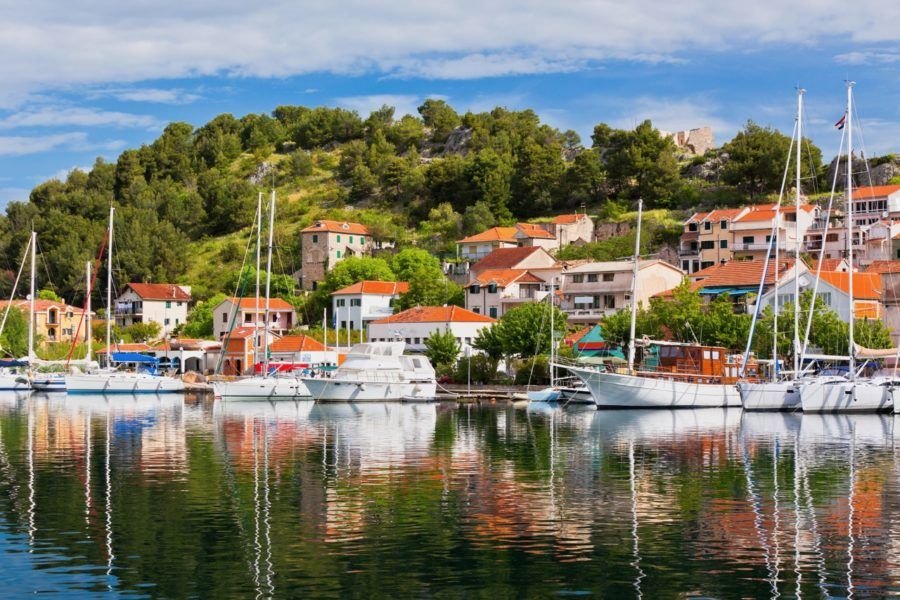
One of the best day trips from Zadar is to the Krka Waterfalls. It’s an easy journey from Zadar, taking about 1.15 hours when driving. Like Split, you can also get the bus to Krka National Park from the Zadar bus station, but it takes longer, and you are also at the mercy of the limited bus services.
How To Get From Skradin To Krka National Park
There are five entrances to the park, with the main ones being Skradin and Lozovac. From the Krka National Park Lozovac entrance, you will park your car and be taken to the main waterfalls by bus during July and August.
If you arrive at the Skradin entrance, on the other hand, you will enjoy a boat ride. This scenic boat from Skradin to Krka National Park takes around 25 minutes, with boats leaving every hour.
However, this Skradin to Skradinski Buk boat ride (and back to Skradin) is a ferry that takes visitors to this spectacular waterfall. It is not the same as other boat excursions within the national park. Suppose you’d like to see the rest of the park by boat. In that case, you can book an additional Krka National Park boat tour to places like Visovac Island, Roški slap, and the Krka monastery, practically all other major Krka National Park attractions.
Both the bus from Lozovac to Skradinski Buk and the boat from Skradin to Skradinki Buk are included in the Krka National Park entrance fee. Super-convenient and even more beautiful!
And this brings us to…
Move This Adventure To Your Inbox & Get An Instant Freebie

No spam. Unsubscribe at any time.
Krka National Park Entry Tickets

There are several categories and three different visiting seasons that determine the Krka National Park entry cost. Prices vary depending on the time of year and the area you want to visit. Children under seven years old can always enter for free, though.
In the past years, adult ticket prices for all accessible land sites varied between 30 kn and 200 kn. On this page, you’ll find a detailed overview of the prices for Krka tickets.
If you get a ticket to all accessible land sites in the park (and you should, it’s the most popular ticket), it includes one visit to all Krka National Park sites on land. Your access will also include professional demonstrations and presentations at the main attractions, including the Burnum archaeological collection, ethno presentations at Skradinski Buk and Roski Slap, the Oziđana Pećina Cave, and all educational trails.
Additionally, as mentioned above, and depending on the time of year and your entrance, it may also come with the boat and/or bus transportation through Krka National Park.
When Is The Best Time To Visit Krka National Park?
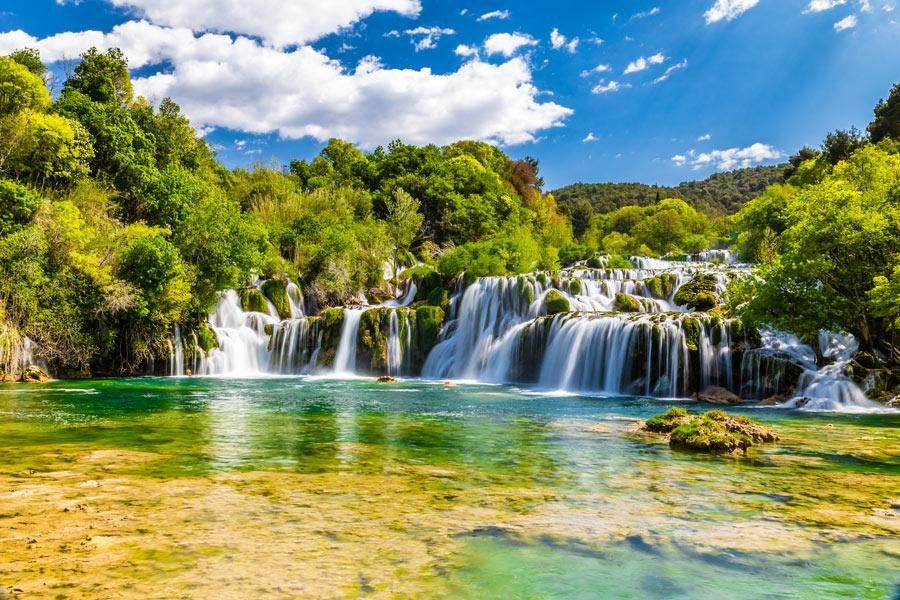
Although some sites may be closed through winter, the national park is open all year round. Any time of the year is an excellent time to visit, as the various seasons show a different side of the park.
Winter comes with beautiful snow cover, while spring brings wildflowers and fabulous foliage fall. Summer is arguably the best time to visit Krka, though, because this is when you can swim in the park’s southern part.
What Time Does Krka National Park Open & Contact Details
Krka National Park is open every day of the year except for Dec 25 and 26. Note that the Krka National Park opening times vary at each entrance, so it’s best to check the website directly, by phone, or by email.
- Phone: +385 (0)22 201-777
- E-mail: info@npk.hr
- Website: http://www.np-krka.hr/en/
The only question is now, when will you visit Krka National Park?

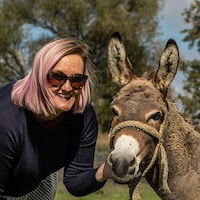
Nice bathtub, great to be in! (y)
Indeed
What is the weather like in Croatia in June?
As soon as possible
I remember when we were in Croatia my brother-in-law took my husband and me to see this wonderful Park. If ever in Croatia don’t miss it.
A great swimmingpool! Been there several times!
Done ✅
I love Krka but would really like to see some effort put in to building at least one easy access into the water, as it is, the young and fit have no problems but for the more mature of us, well let’s say it can be a bit scary
I think leaving it natural is better, or else it would get way too busy.
Looking forward to it this Sept! Wahoo!!!
They look amazing!!
Awesome!! So excited!!
This was so very helpful thanks for all of your posts with so many details.